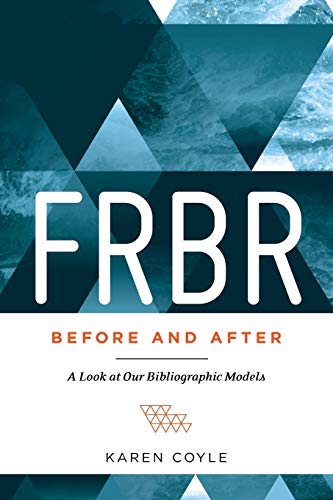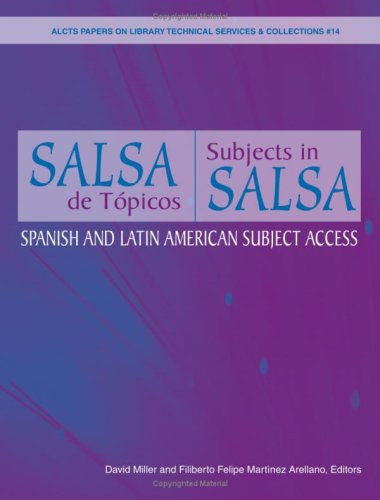Cataloging Tools and Resources: Specialized Cataloging Issues
Overview of standards underlying library cataloging, with links to sources for the tools.
Spanish Language Cataloging Aids
-
Sears: Lista de Encabezamientos de MateriaWorldCat record for Sears list in Spanish. It is available in both print and database forms.
Children's Cataloging
-
Cataloging Correctly for Kids by
ISBN: 9780838935897Publication Date: 2010-07-01This text is based on guidelines issued by the ALCTS. It is a one-stop handbook for librarians who organize information for children.
Rare Books Cataloging
-
Resources for Rare Books CatalogersCataloging Aids and committee documents from the ACRL Rare Books and Manuscripts Committee.
Additional Standards
There are additional conventions and protocols for arranging and describing contrnt, as this listing from the SAA Standards Committee shows.
-
Arrangement and Description StandardsLinks to Technical Standards, Conventions, and Taxonomies.
FRBR
-
Functional Requirements for Bibliographic RecordsLinks to the 1998 text, as well as resources from IFLA
-
Functional Requirements for Bibliographic Records by
ISBN: 9783110962451Publication Date: 1998-01-01
-
OCLC and FRBROCLC Research Activities and IFLA's Functional Requirements for Bibliographic Records
-
 FRBR, Before and After
by
ISBN: 9780838913451Publication Date: 2015-10-01Coyle persuasively argues that to more effectively connect library users with books, movies, music, computer games, and other resources, library data needs to move beyond FRBR towards a more integrative approach to bibliographic models. But doing so requires fundamental changes in the approach to library data. Combining a sweeping perspective with a critical eye, she assesses how we define a work in the bibliographic world. Showing how bibliographic models reflect technology and our assumed goals of libraries, she points the way ahead for catalogers and metadata specialists, providing clear explanations and analysis. Coyle's articulate treatment of the issues at hand helps bridge the divide between traditional cataloging practice and the algorithmic metadata approach, making this book an important resource for both LIS students and practitioners.
FRBR, Before and After
by
ISBN: 9780838913451Publication Date: 2015-10-01Coyle persuasively argues that to more effectively connect library users with books, movies, music, computer games, and other resources, library data needs to move beyond FRBR towards a more integrative approach to bibliographic models. But doing so requires fundamental changes in the approach to library data. Combining a sweeping perspective with a critical eye, she assesses how we define a work in the bibliographic world. Showing how bibliographic models reflect technology and our assumed goals of libraries, she points the way ahead for catalogers and metadata specialists, providing clear explanations and analysis. Coyle's articulate treatment of the issues at hand helps bridge the divide between traditional cataloging practice and the algorithmic metadata approach, making this book an important resource for both LIS students and practitioners.
Metadata
-
Dublin Core Metadata InitiativeThe Dublin Core Metadata Initiative (DCMI) is an open organization managed as a project of ASIS&T. DCMI supports shared innovation in metadata design and best practices across a broad range of purposes and business models.
-
Dublin Core Metadata Element SetThis document provides ready reference for the Dublin Core Metadata Element Set, Version 1.1.
-
Metadata by
ISBN: 9781555709655Publication Date: 2015-10-01Metadata remains the solution for describing the explosively growing, complex world of digital information, and continues to be of paramount importance for information professionals. Providing a solid grounding in the variety and interrelationships among different metadata types, Zeng and Qin's thorough revision of their benchmark text offers a comprehensive look at the metadata schemas that exist in the world of library and information science and beyond, as well as the contexts in which they operate.

